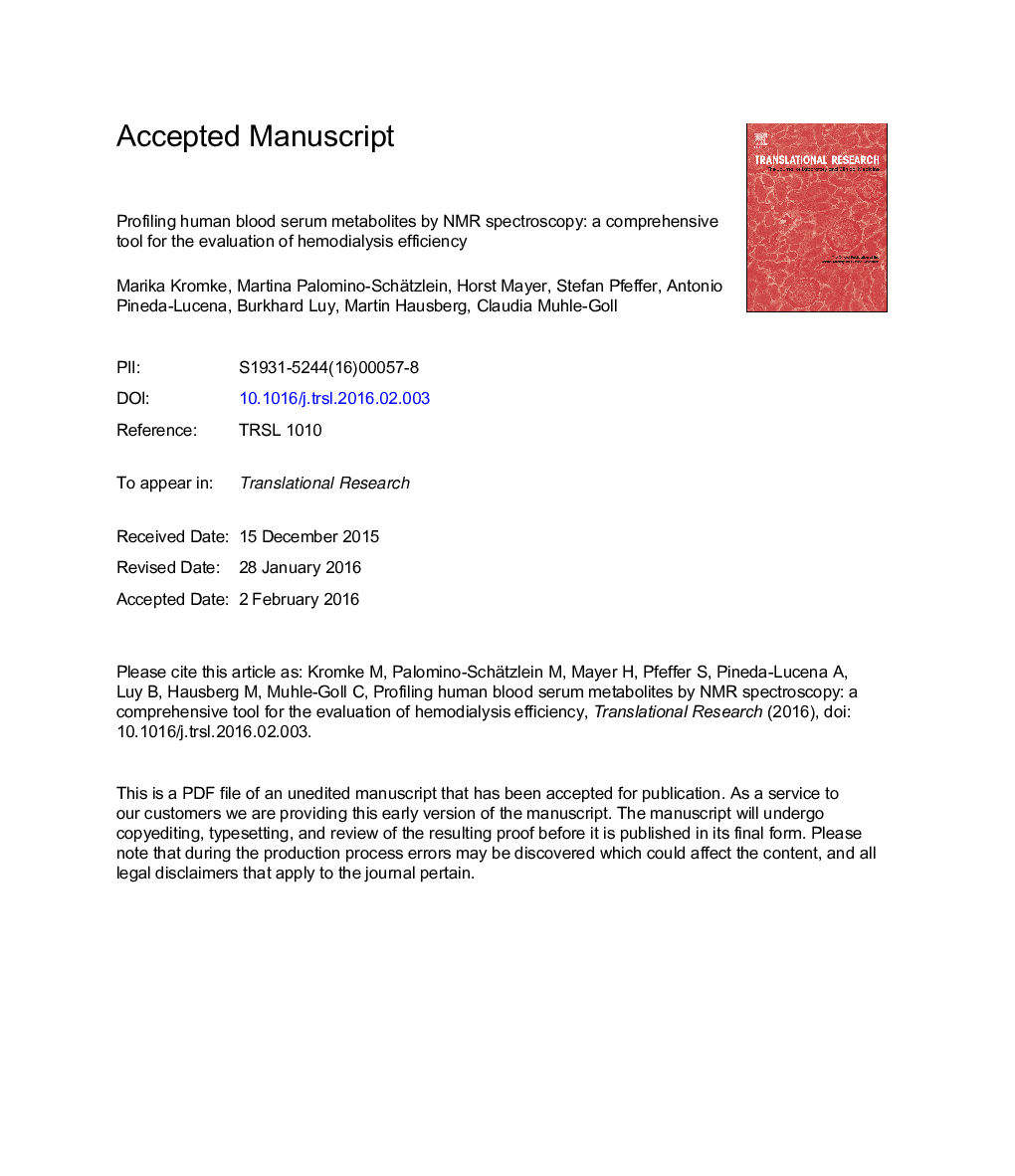| Article ID | Journal | Published Year | Pages | File Type |
|---|---|---|---|---|
| 6156021 | Translational Research | 2016 | 41 Pages |
Abstract
Hemodialysis remains the standard therapy to treat patients affected with end-stage renal disease by removing metabolites accumulated in blood plasma. The efficiency of hemodialysis is mainly monitored by urea clearance, which is routinely checked in clinical laboratory practice. However, there is mounting evidence that the clearance behavior of selected single metabolites is not sufficient to predict long-term outcome of treatment. To address this problem, we evaluated the potential of nuclear magnetic resonance spectroscopy for monitoring hemodialysis efficiency by comprehensive profiling of blood serum metabolites. We carried out a pilot study with a cohort of end-stage chronic kidney disease patients (n = 29), analyzing their serum prior and immediately after hemodialysis. To account for supposed variability in the accumulation of metabolites and efficiency of hemodialysis, patients' blood sera were repeatedly collected over a period of several months. Our results revealed that the metabolic profile in terms of concentrations varied considerably between patients but was comparably constant on the patient's level over the period of 4 months. Interestingly, also the individual clearance of the metabolites was characteristic for each patient. Thus, it is conceivable that the observed patient-dependent clearance patterns reflect to some extent the patients' long-term perspectives. We conclude that nuclear magnetic resonance spectroscopy is an optimal tool to complement traditional clinical methods based on a single variable, providing comprehensive and much more global information, which is crucial for patient evaluation and the development of improved treatments of kidney failure.
Keywords
Related Topics
Health Sciences
Medicine and Dentistry
Medicine and Dentistry (General)
Authors
Marika Kromke, Martina Palomino-Schätzlein, Horst Mayer, Stefan Pfeffer, Antonio Pineda-Lucena, Burkhard Luy, Martin Hausberg, Claudia Muhle-Goll,
